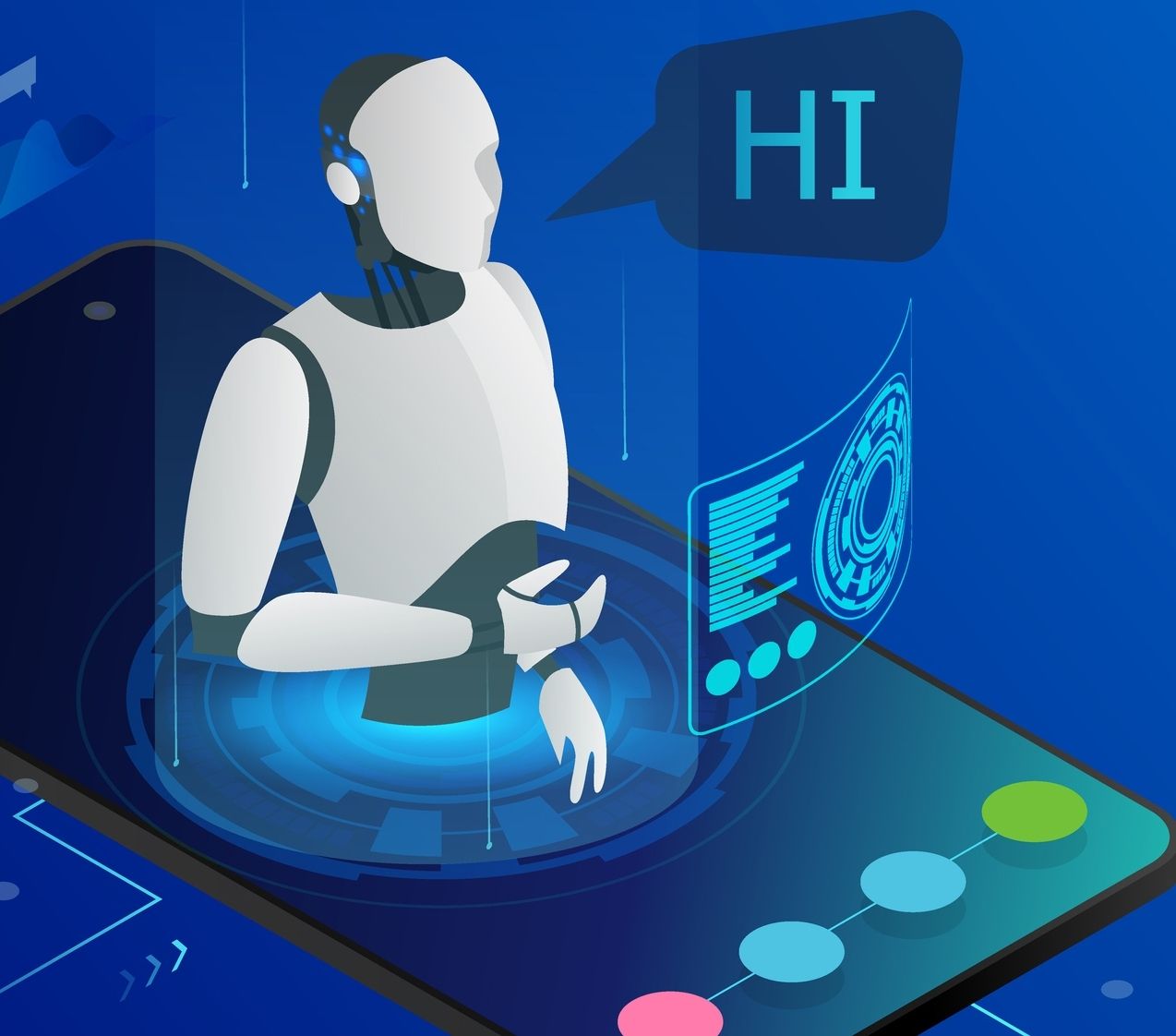The Daily Valet. - 4/24/25, Thursday
Thursday, April 24th Edition |
 | By Cory Ohlendorf, Valet. EditorWhat part of your job could be handled by a machine? |
Today’s Big Story
Are Robots Coming for Our Jobs?
Some signs point to a future that’s coming faster than you think

There’s no denying the facts: Robots, especially advanced humanoid robots powered by artificial intelligence are smarter, certainly faster and most would argue stronger than standard humans. So does that make them better than human workers? Perhaps. At least at certain jobs, right?
Sure, right now AI for the average Joe is all about playing around with ChatGPT. And for those clinging to the belief that automation and robots are still decades away from significantly impacting the workforce, Adam Dorr, director of research at the think tank RethinkX, gave Newsweek a stark warning: this change is going to be fundamental, and it's coming faster than nearly anyone thinks. The future of AI isn't a distant possibility—it's already here, Dorr says, reshaping industries at a breakneck pace. AI is no longer just a tool for streamlining tedious tasks; it is advancing so quickly that entire professions are at risk of disappearing whole cloth.
Take, for instance, the start-up RoboForce, makers of the RF-04 robot. It says it is “building the world’s most advanced robo-labor system”. Built on the five capabilities of mobility, manipulation, learning, communication and safety compliance, the robots are intended for use across the solar, space, manufacturing and mining industries, among others. The company’s founder and CEO Leo Ma says “There’s a long list of things that new-generation AI-robotic systems can do—picking up bananas or apples, folding T-shirts, cooking and all of that. At RoboForce, we don’t do any of that. We have a very clear focus on robo-labor.”
Clearly China is a believer. An enormous investment in factory equipment and artificial intelligence is giving China what experts say is a definite edge in car manufacturing and other industries. With engineers and electricians tending to fleets of robots, these operations are bringing down the cost of manufacturing while improving quality. As a result, China’s factories will be able to keep the price of many of its exports lower, giving it an advantage in fighting the current trade war.
Just how many jobs can be replaced by robots? Well, if you ask one famed AI researcher, he’ll tell you … all of them. Tamay Besiroglu’s new startup, Mechanize, wants to provide the data, evaluations, and digital environments to make worker automation of any job possible. Besiroglu even calculated Mechanize’s total addressable market by aggregating all the wages humans are currently paid. “The market potential here is absurdly large: workers in the U.S. are paid around $18 trillion per year in aggregate. For the entire world, the number is over three times greater, around $60 trillion per year.” But, at least for today, we all still need to go to work.
FYI: | Analysts expect such robots to be commercially available for manufacturers, supply chain and logistics giants, and retail industries within two years. |
Trump’s Approval Rating Has Been Falling Steadily
Confidence in the president has sunk to about 45%, down from 52% one week after he took office
As the old saying goes, “it’s the economy, stupid!” And that seems to be the case here as Americans’ confidence in President Donald Trump’s ability to manage the U.S. economy has plummeted since he regained the White House, new data from the Pew Research Center reveals. Around half of the country now disapproves of his performance.
A New York Times average of polling reveals that Trump’s job approval rating has fallen steadily during his first three months in office. It’s sunk to about 45%, down from 52% one week after he took office. American presidents typically enter office with a groundswell of support that wanes over time. But Trump’s approval has been dropping slightly faster than that of his predecessors … and his first term in 2017.
The pair of surveys out Wednesday follow a CNBC All-America Economic Survey released earlier this week that also registered Trump’s lowest economic approval ratings of his entire White House career, with just 43% of Americans approving of his handling of the economy. Of course, this plunge in overall confidence is especially significant given that Trump won the 2024 presidential election against then-Vice President Kamala Harris on a platform of lowering grocery prices (“on day one”) while bringing down inflation and revitalizing the economy still recovering from the pandemic.
FYI: | Democratic attorneys general from 12 states filed a joint lawsuit arguing that the president doesn't have the constitutional authority to execute his sweeping tariff agenda. |
Russia Launches Deadly Strikes on Ukraine’s Capital
The attack comes as Trump accuses Zelensky of harming peace talks
President Donald Trump and Vice President JD Vance insisted Wednesday that Ukraine needed to make concessions to ensure peace (while offering Kyiv only vague security assurances), but it only made Ukrainian President Volodymyr Zelensky push back and demand that Russia must accept a full ceasefire before negotiations.
The American plan, which would also explicitly block Ukraine from ever joining NATO, would also call for the United States to recognize Russia’s 2014 takeover of Crimea. Trump accused Zelensky on Wednesday of “boasting” after the Ukrainian leader told reporters the day before that Kyiv will never recognize Crimea as Russian territory. A reminder: Any move to recognize Russia’s control of Crimea would reverse a decade of U.S. policy and could upset the widely held post-World War II consensus that international borders should not be changed by force. “He can have Peace or, he can fight for another three years before losing the whole Country,” Trump wrote on Truth Social. He also said the United States would “walk away” from the peace process if both Ukraine and Russia refused to accept the American terms. But Zelensky was clearly the target.
Kyiv was the actual target of a Russian attack as waves of drones and ballistic missiles struck the Ukrainian capital early on Thursday. There were explosions for much of the night, with Kharkiv and other cities also targeted. The strikes killed at least nine people and wounded nearly 80 more, according to Ukraine’s emergency services.
Meanwhile: | Zelensky landed in South Africa earlier today for talks on ties, peace efforts. |
Will the U.S. Ban Synthetic Food Dyes?
RFK’s plan to phase out the dyes will likely face industry pushback
Major food companies haven't officially agreed to ditch artificial dyes despite Health and Human Services Secretary Robert F. Kennedy Jr.'s push to ban them, though several of the nation's largest companies signaled they're committed to a conversation about it. He said that the Food and Drug Administration is working with industry to eliminate synthetic dyes from the American food supply over the next two years.
The Consumer Brands Association, a trade association for the makers of consumer packaged goods, said that ingredients in the U.S. food supply have been “rigorously studied following an objective science and risk-based evaluation process and have been demonstrated to be safe.” Of course, there are plenty of these dyes that aren’t used in Europe or Asia, just here in the States. And according to CNN, research in animals has shown a potential link between artificial food dyes like red No. 3, red No. 40, blue No. 2 and green No. 3 and an increased risk of cancer or tumors. Blue No. 1 and yellow No. 6 may be toxic to some human cells, and as little as 1 milligram of yellow No. 5 may cause irritability, restlessness and sleep disturbances for sensitive children.
This move has been anticipated for some time. Back in January, under the Biden administration, the FDA announced that it had banned the use of red dye No. 3 in ingested drugs, food and beverages. The FDA also said it will authorize four new natural color additives in the coming weeks and fast-track the review of natural alternatives to synthetic food dyes such as calcium phosphate, Galdieria extract blue, gardenia blue and butterfly pea flower extract.
Dig Deeper: | Here's what health experts have said about the dyes. |
|
| |||||||||




